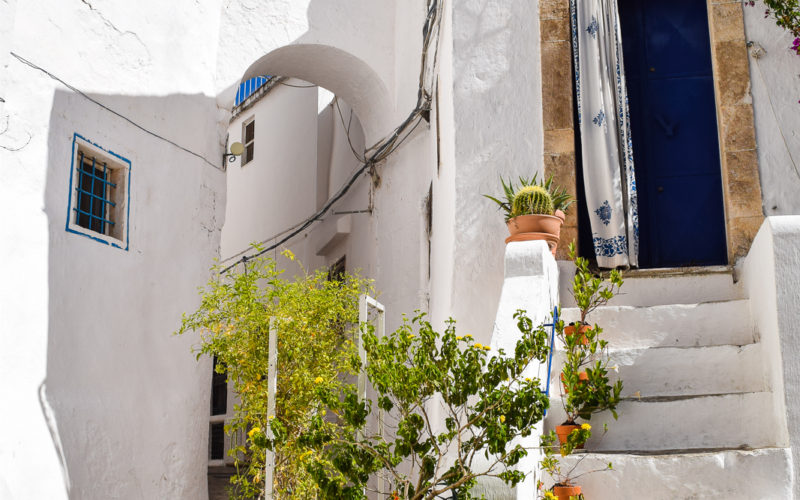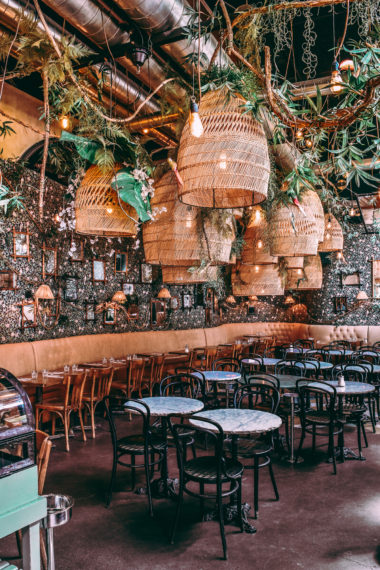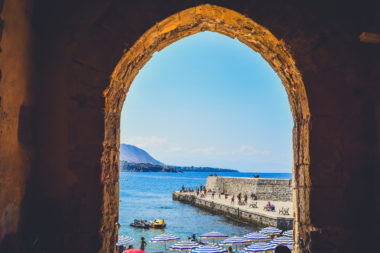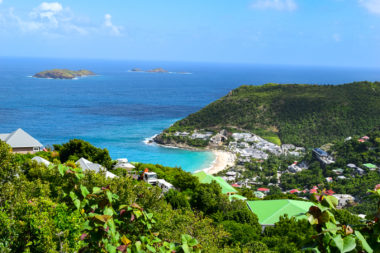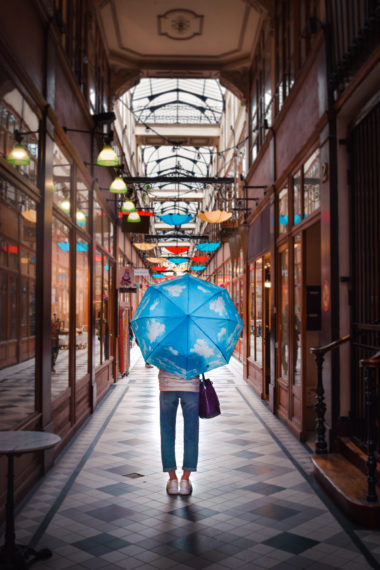Visit Ostuni, famous for being a white queen among olive groves. But do you know why it was painted white to begin with?
Standing high on a gently sloping hill overlooking the azure Adriatic sea is the Apulian white city of Ostuni located in the Itria Valley, Puglia. It’s picturesque and spontaneous architecture, mixed with it’s white washed cobblestone streets and narrow staircases, are what make Ostuni worth visiting. Its heart of twisting alleys is guaranteed to have you become pleasantly lost. But what many don’t know is why Ostuni is this dazzling white-washed village, and it’s not all for aesthetics. In addition to learning more about how Ostuni came to be, here’s your guide to the best things to do in Ostuni.
Where to Stay Near Ostuni?
1. Piazza della Libertà
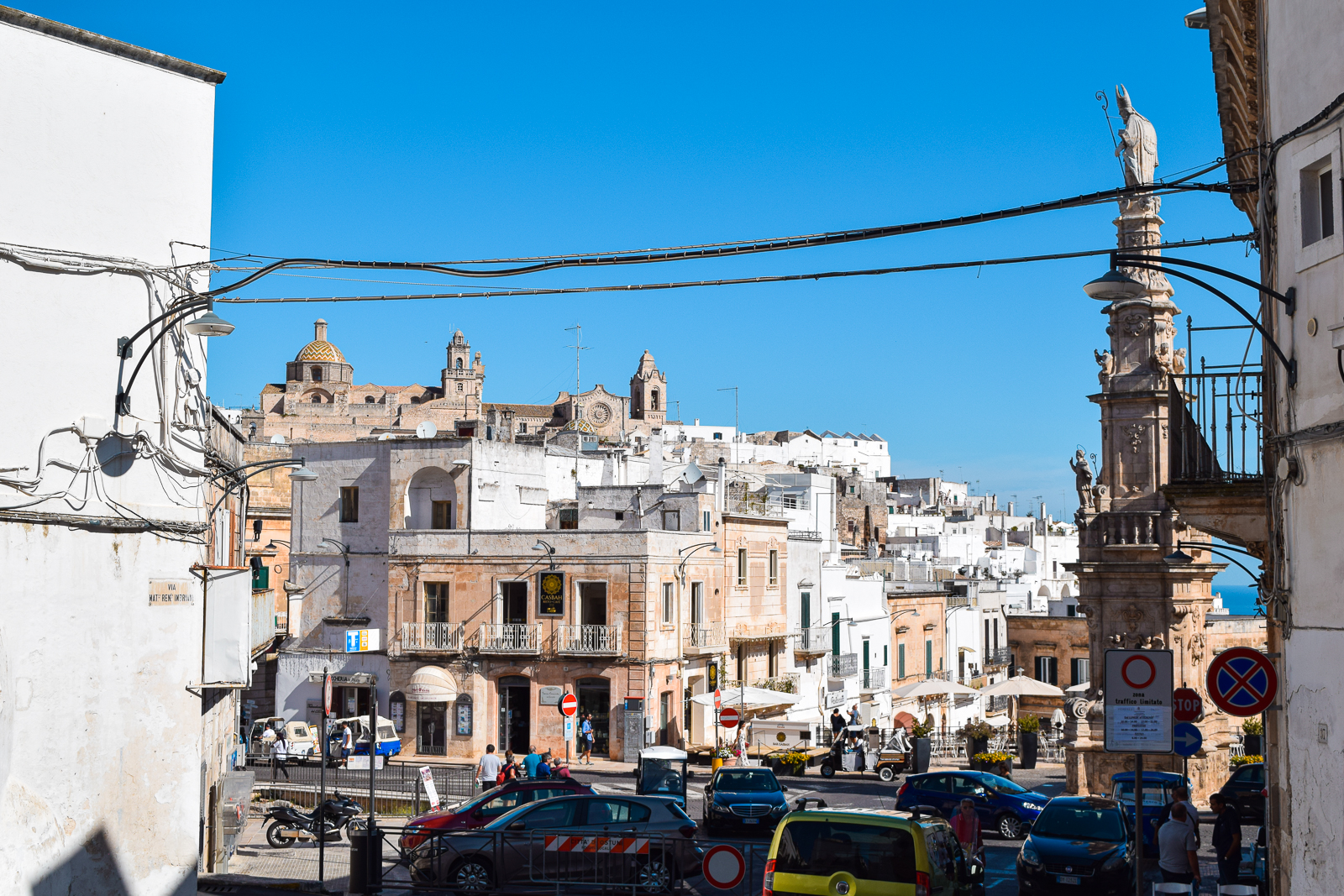
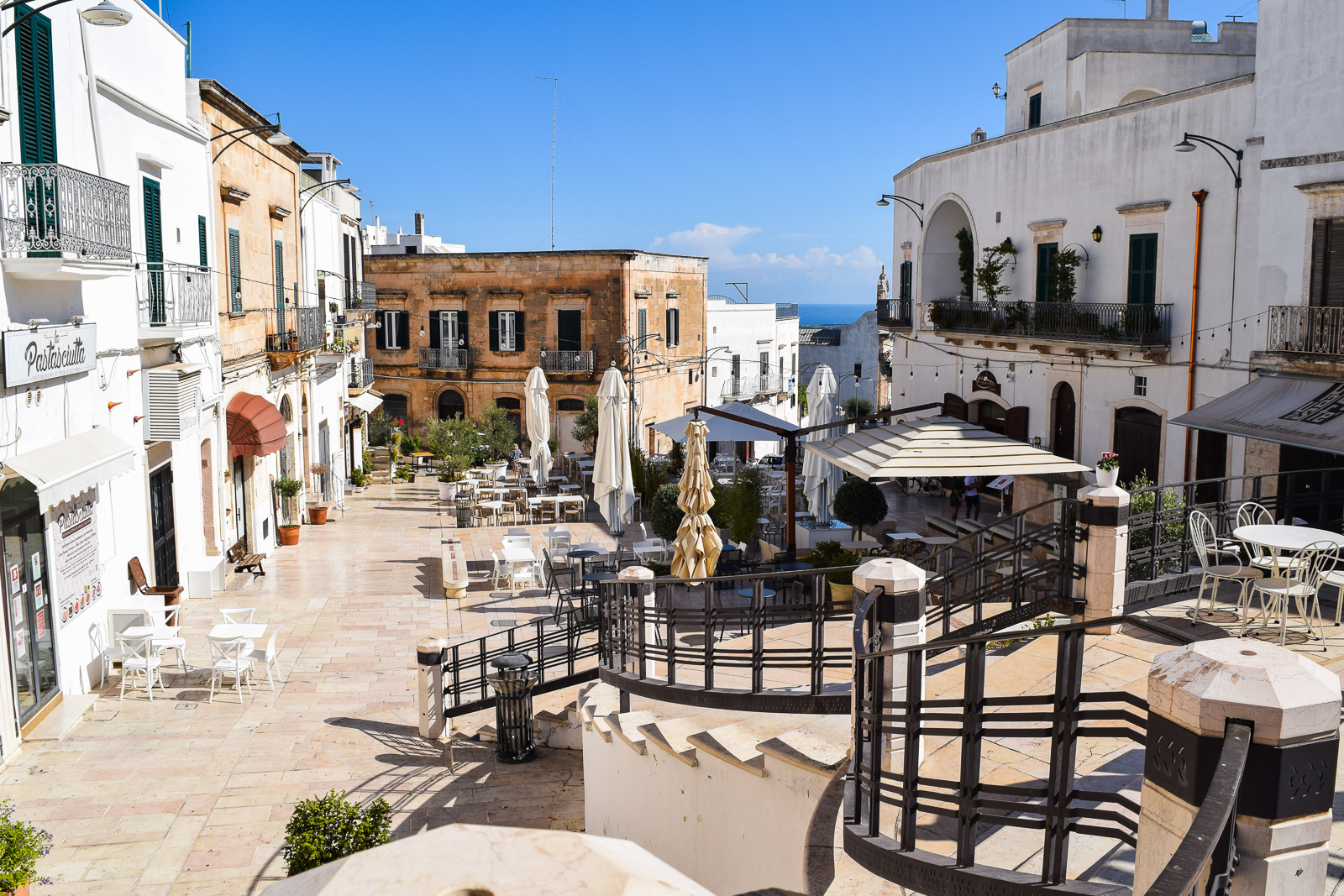
The journey begins at Piazza della Libertà. Bits of cavorting Baroque twist out of unexpected places, the first being an ornamented 18th century obelisk in the Piazza. The obelisk is in honor of the patron saint of Ostuni, Sant’Oronzo. This Saint was chosen as a thank you for protecting the town from the plague in 1657. His patronal festival takes place every August 26, with a parade, period costumes and a silver statue of the saint escorted throughout the streets.21. Piazza della Libertà
2. Pay Attention to the White Lime Paint
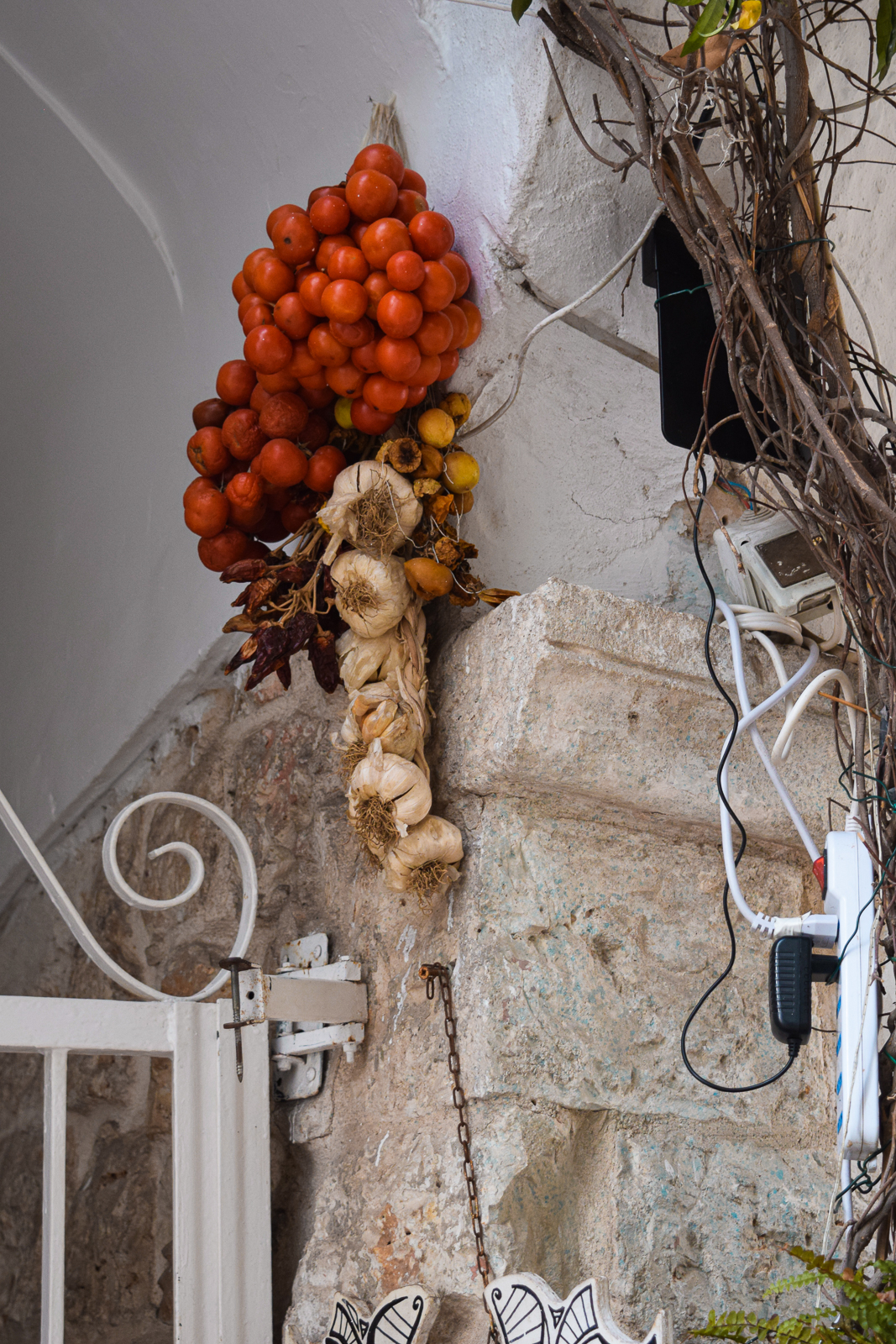
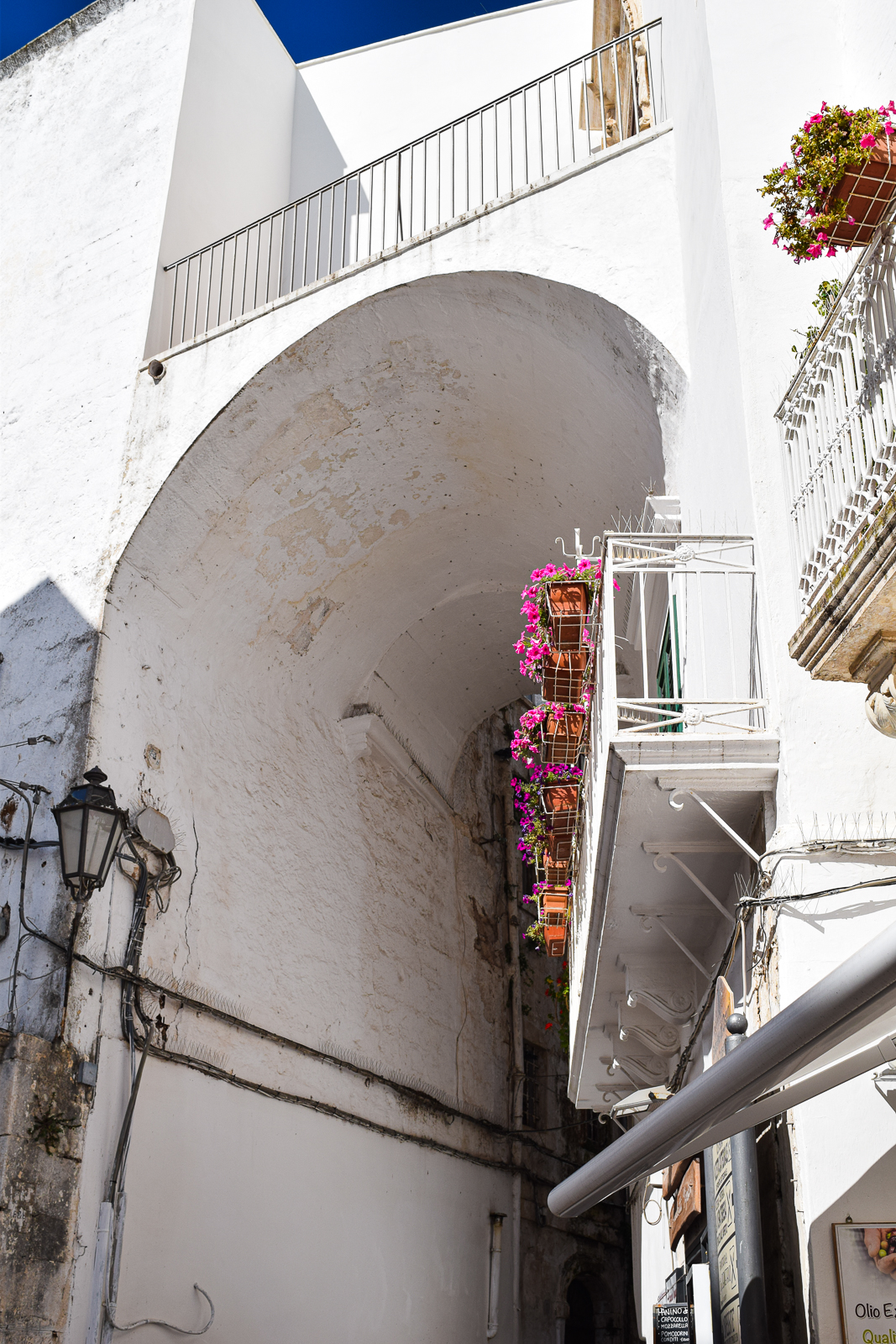
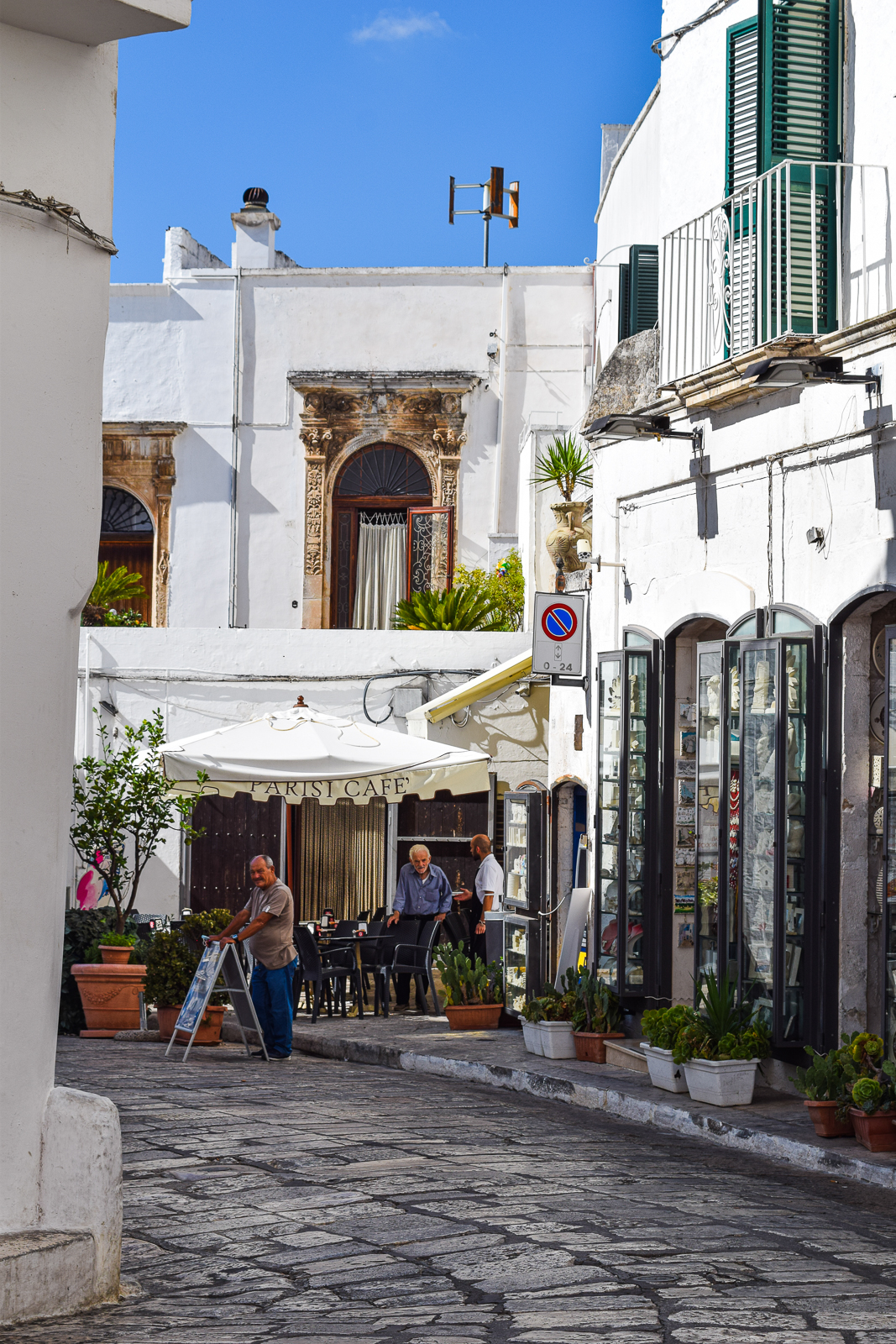
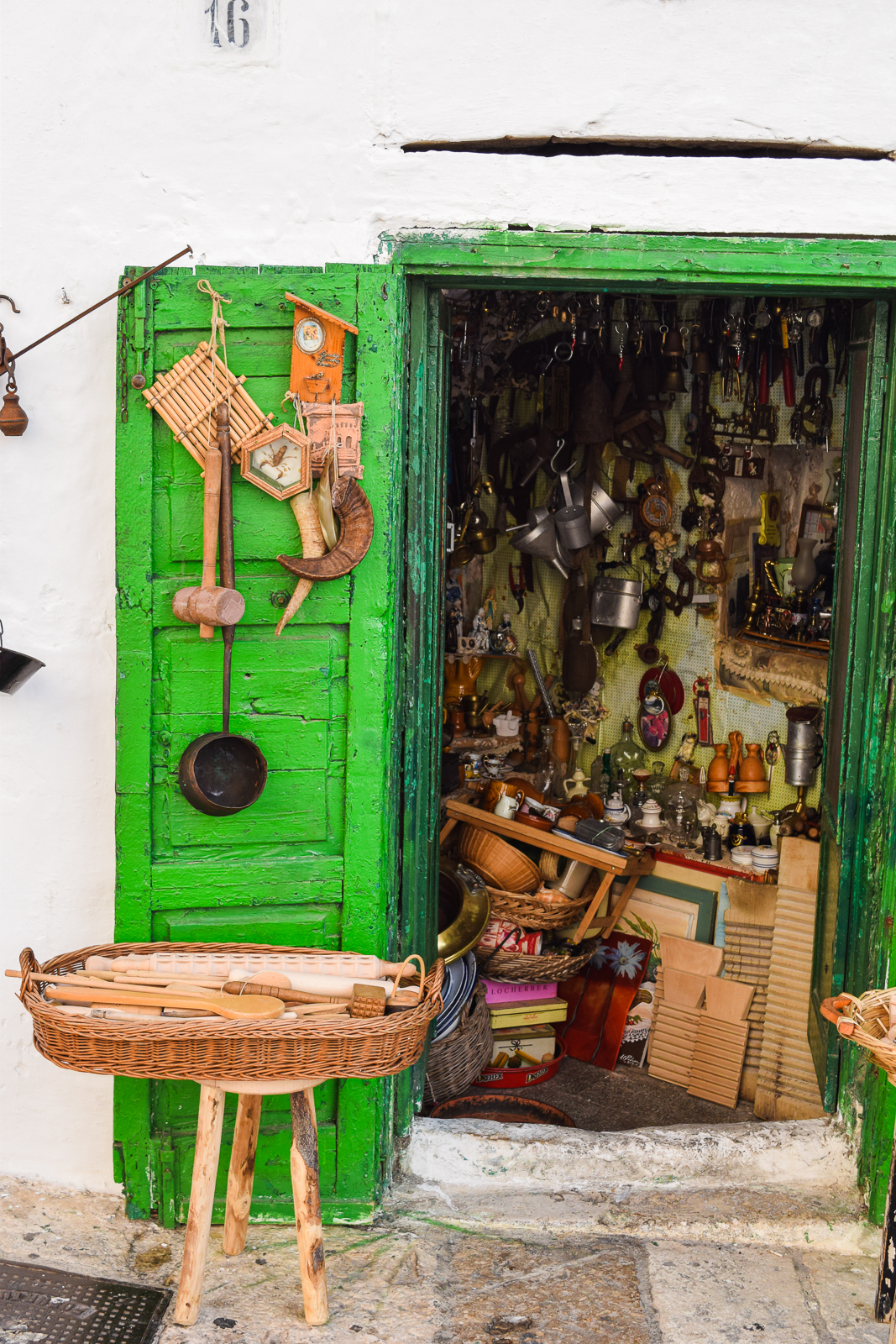
Ostuni is famous for being a white-washed maze perched on one of the 3 hills of southern Murgia. But why is it white? And it’s not for aesthetics.
Sure, in medieval times the tradition of whitewashing was used to provide brightness to the alleys of the village and reflect the hot heat from the houses in the summer. But In the 17th century, the tradition of whitewashing came to good use. The Itria Valley was affected by the plague, but Ostuni came out unscathed. How? Thanks to the white lime paint used to build the houses, which worked as a natural disinfectant. The alkaline action in the lime prevents the proliferation of bacteria…who would’ve known! Since then, every year the city is calcified by tradition.
3. Wander Il Centro Storico (The Historic Center)
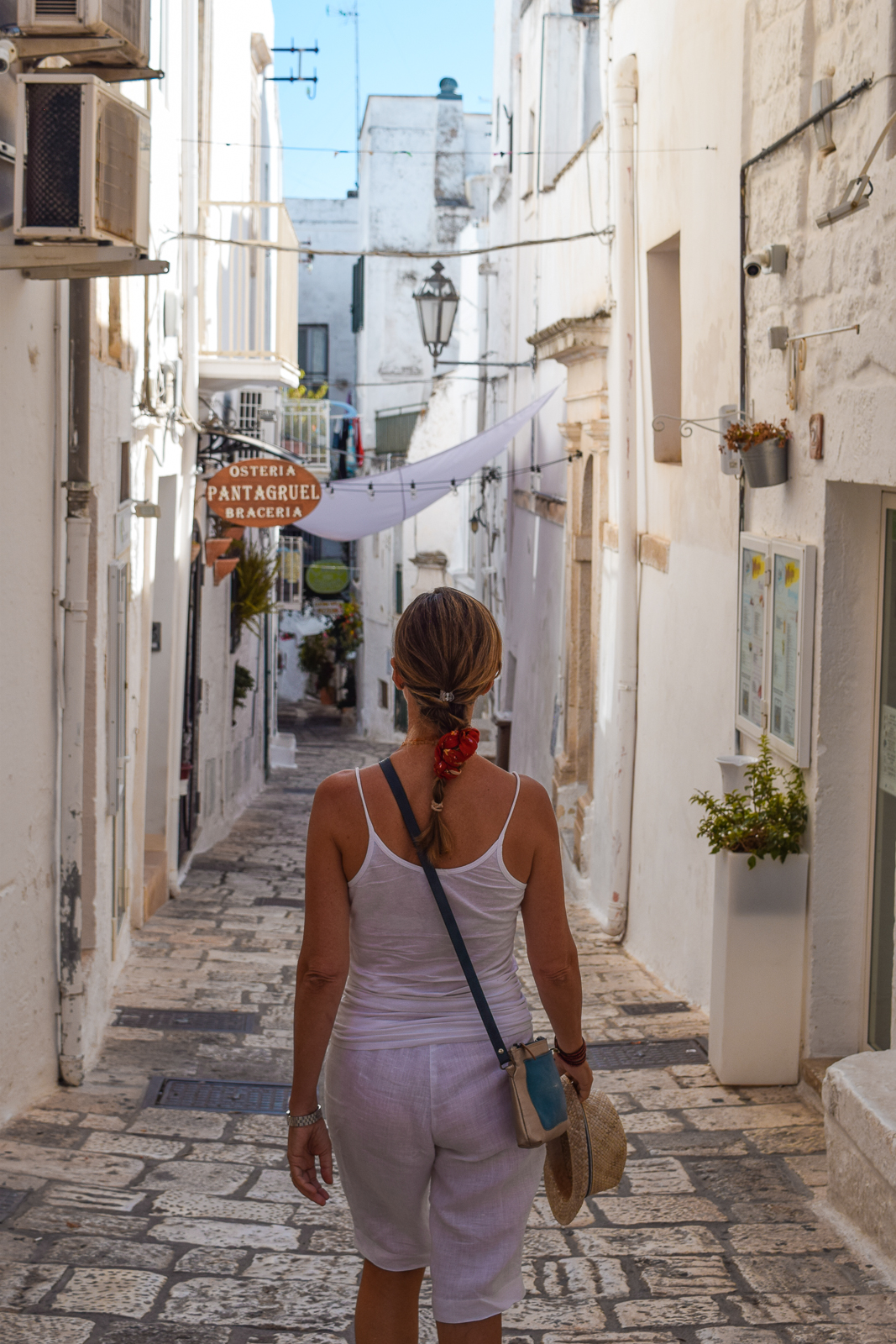
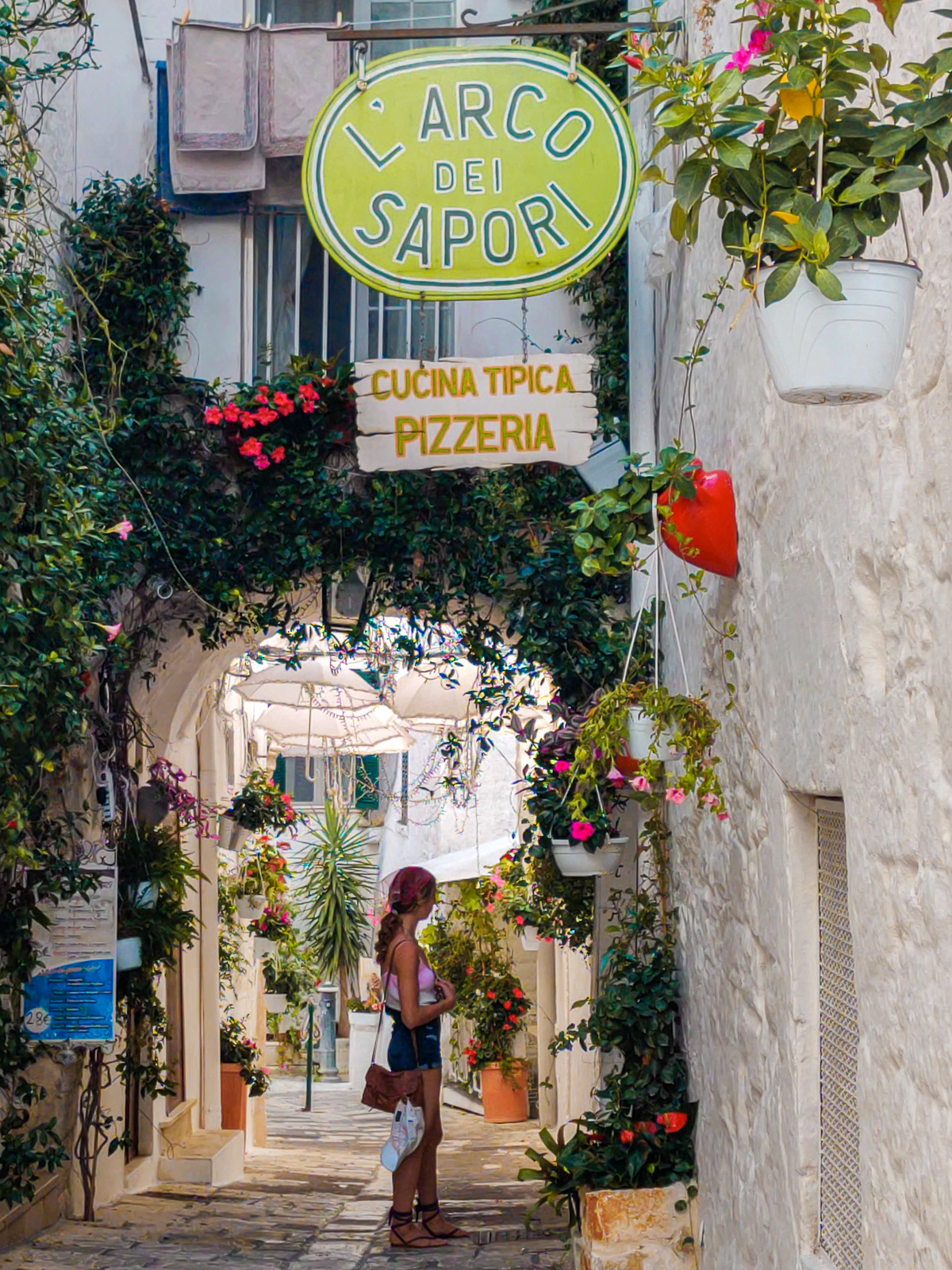
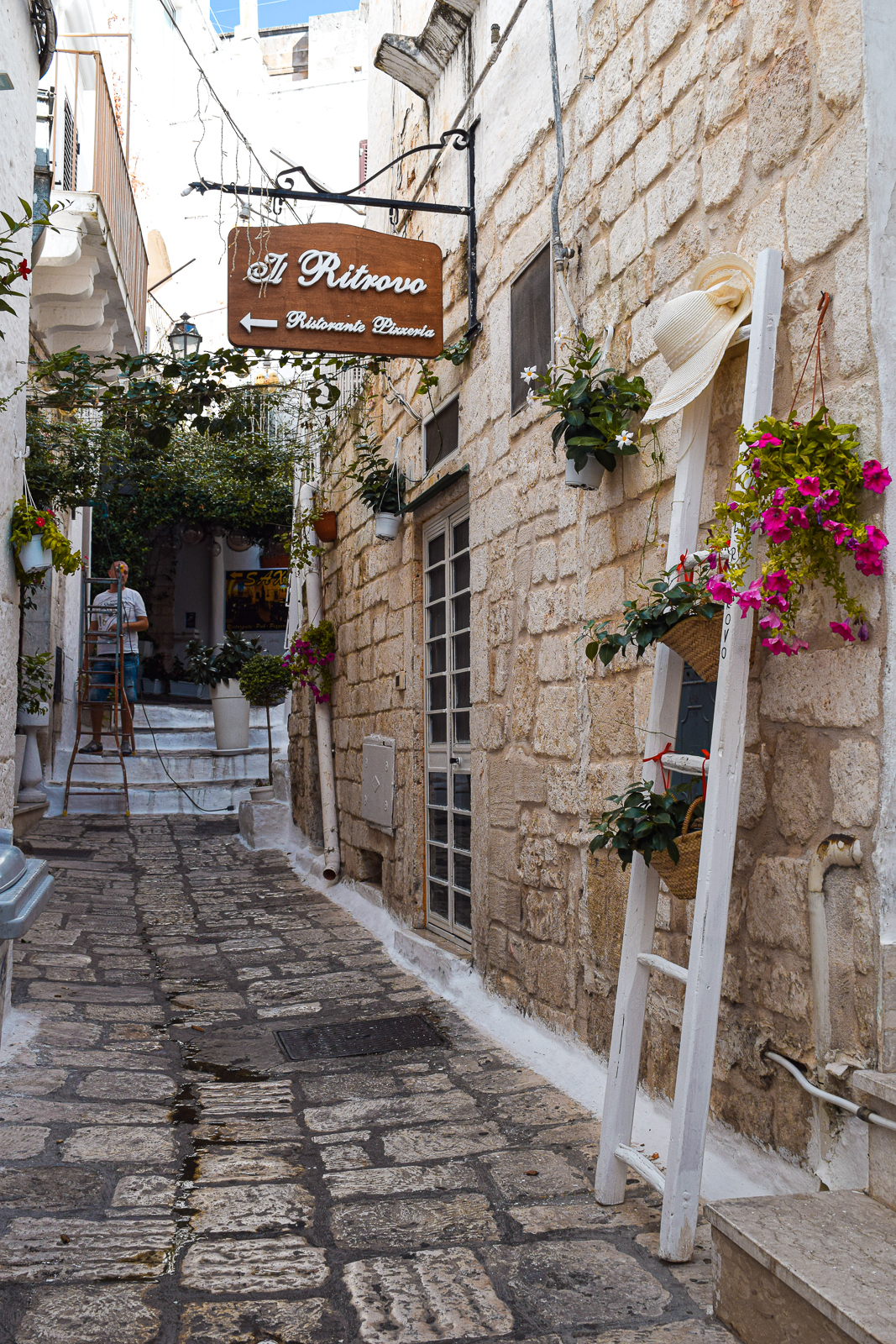
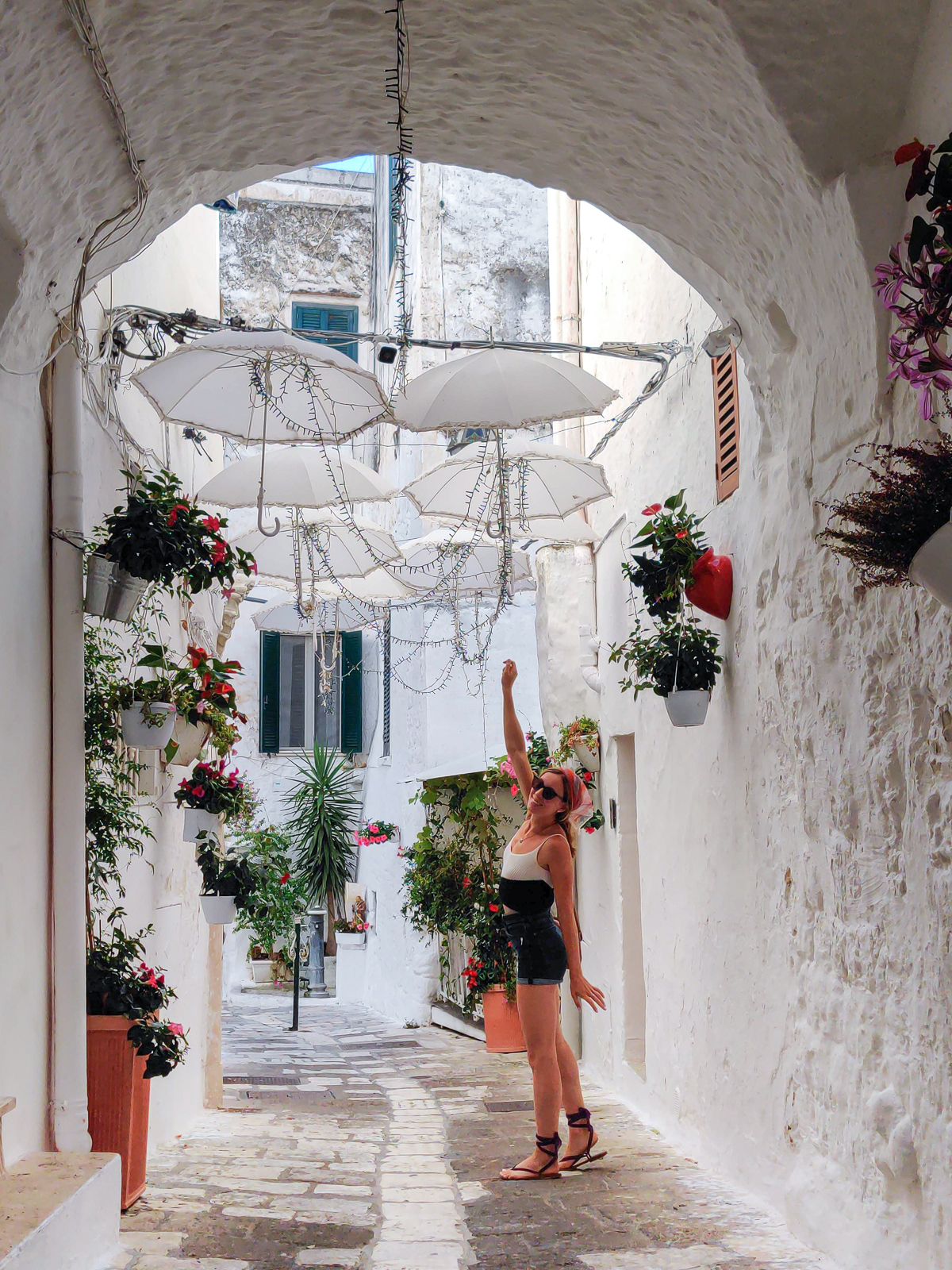
We take the stairs into the main square with bars with outdoor tables until we come to a narrow alleyway leading off the street and up labyrinthine stone staircases taking us higher into the heart of this part of the medieval city. The city was an important Greco-Roman city in the first century AD. A lot of the houses are dug into rock and linked by arches and semi-arches. You will spend the majority of your time losing yourself through these maze-like streets and paying attention to all the small nuances and details. From onion and tomatoes hanging from the front doors to covered white umbrellas sheltering people from the sun, ivy covered arches, white linen canopies shielding locals from the hot summer sun, succulents on succulents on succulents – everwhere and wall art accentuating the natural beauty of its surroundings.
4. San Vito Martire Church
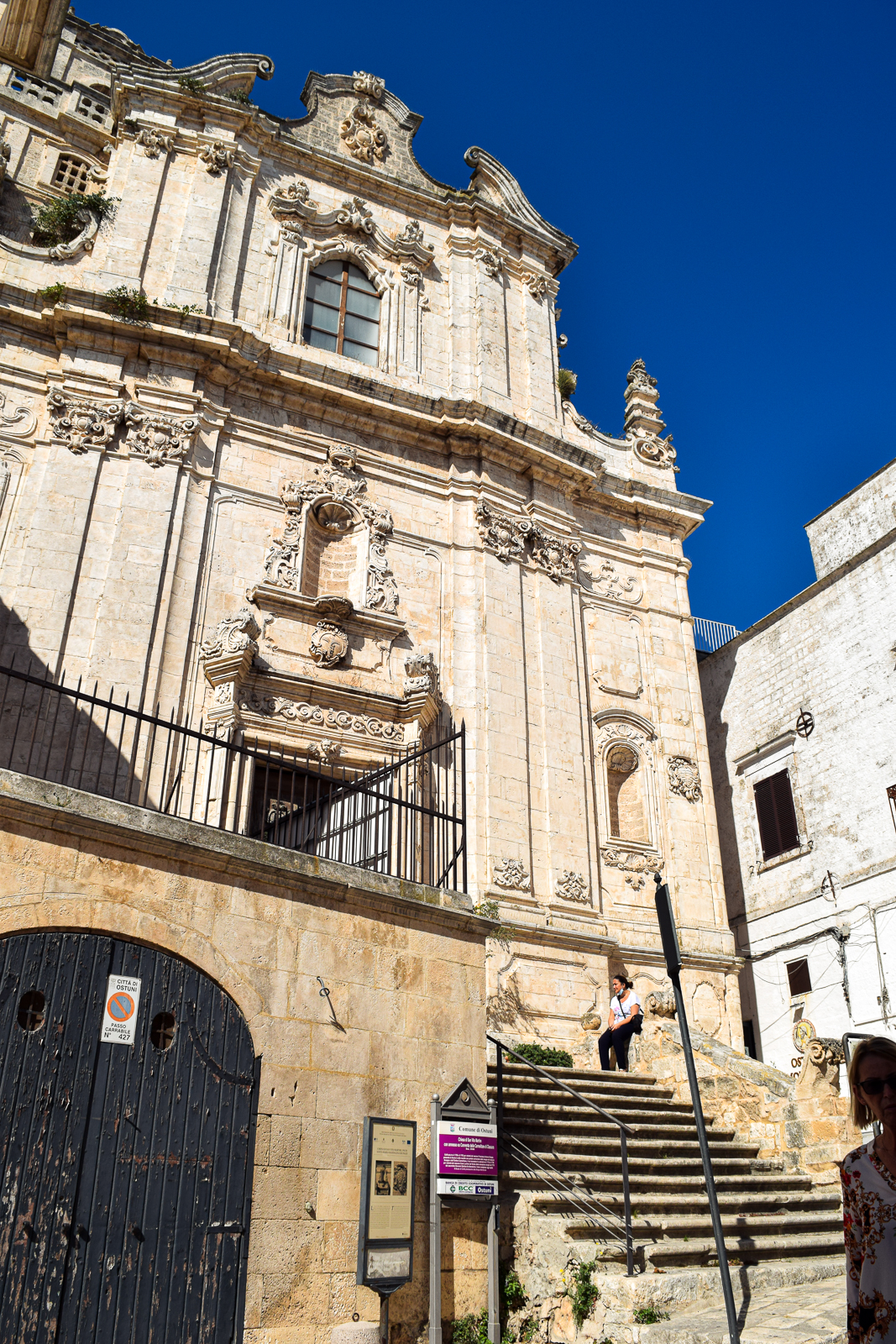
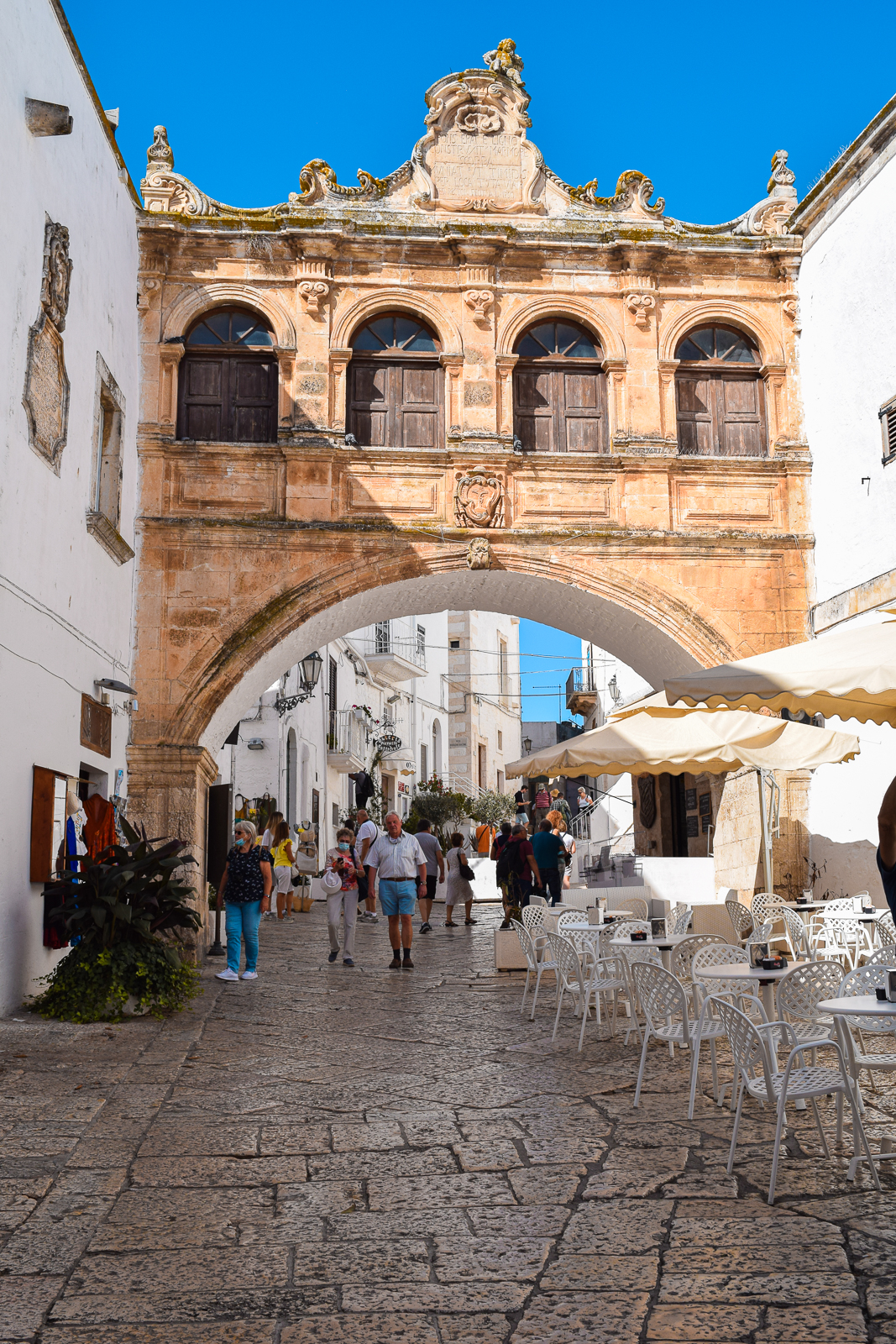
San Vito Martire church is an ornate example of Baroque architecture, or Barrocco Leccese to be more exact. The church from 1750 is similar to the rich architecture found in the Salento towns of Nardo and Gallipoli that I had visited earlier. The façade shows interesting cornices, niches, friezes and coats of arms. The church even has a museum, where the main attraction is a 25,000 year-old preserved skeleton of a pregnant woman, Delia, from the Pleistocene era. They found her in a nearby archaeological site with her skull decorated with stones and beads.
As you head to the Cattedrale di Ostuni, you will walk under the Arco di Scoppa, the old arched passageway connects the Bishop’s palace to the Seminary. The arch is named after Bishop Scoppa who changed the bridge from wood to stone to make it more safe for passage.
5. Cattedrale di Ostuni
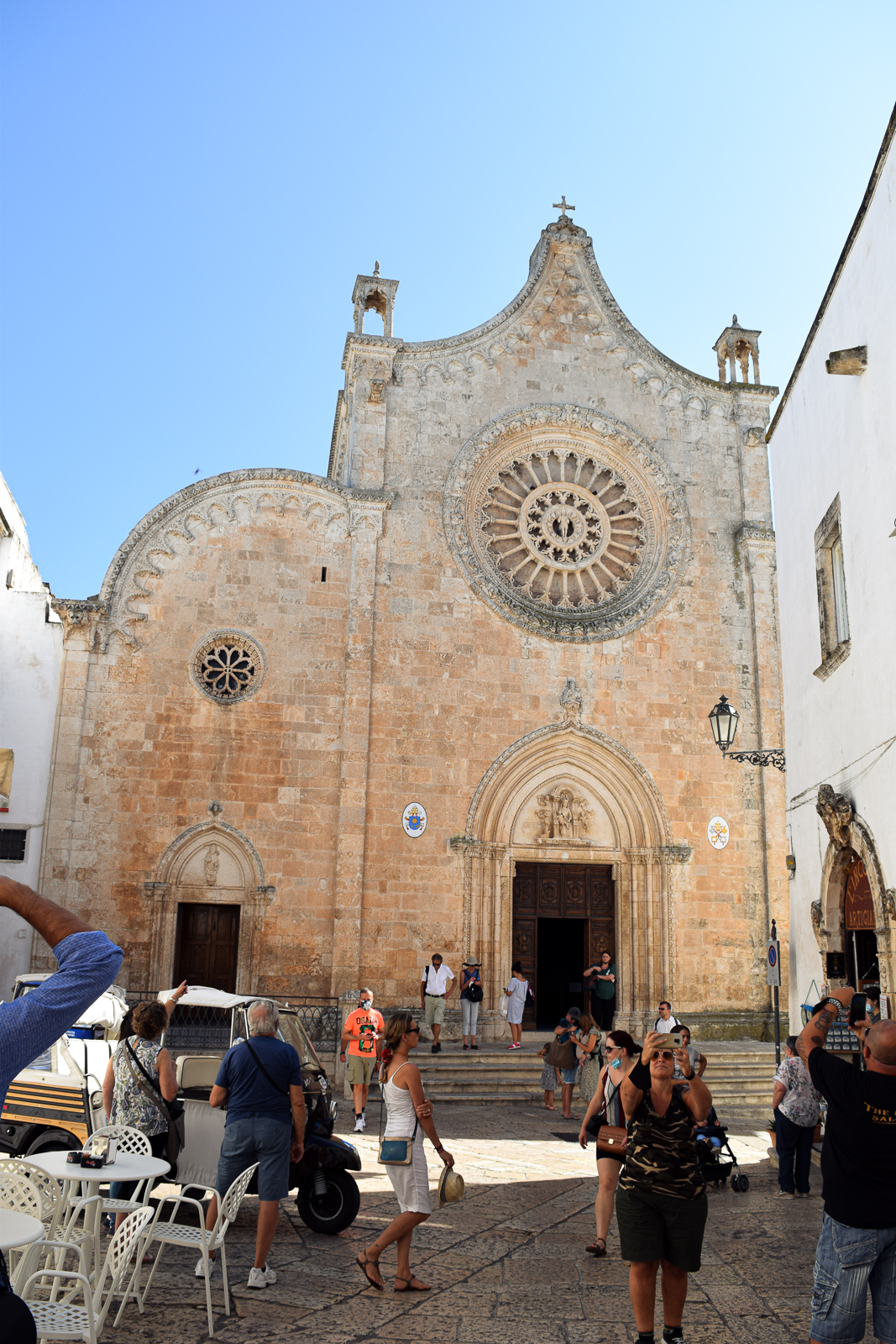
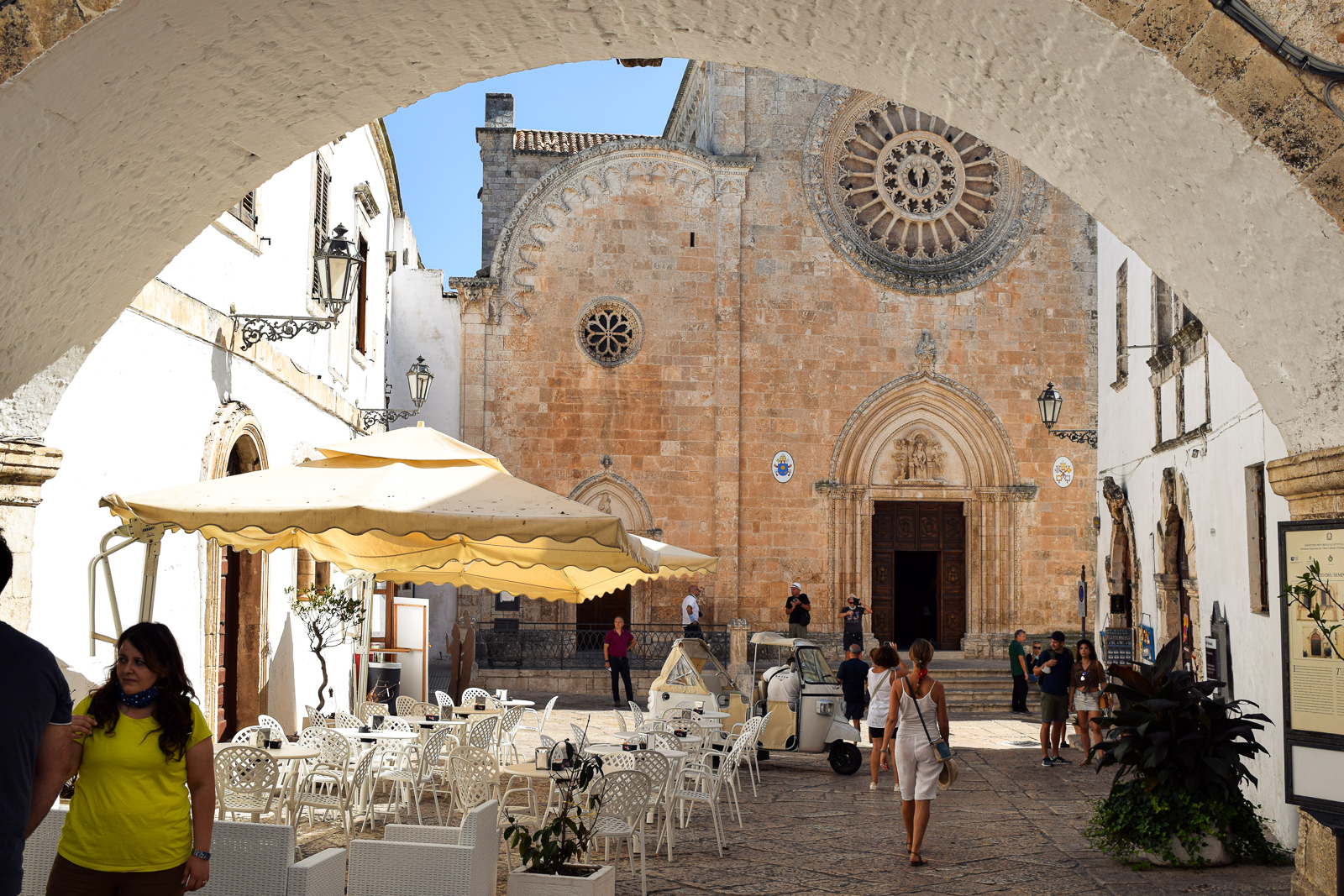
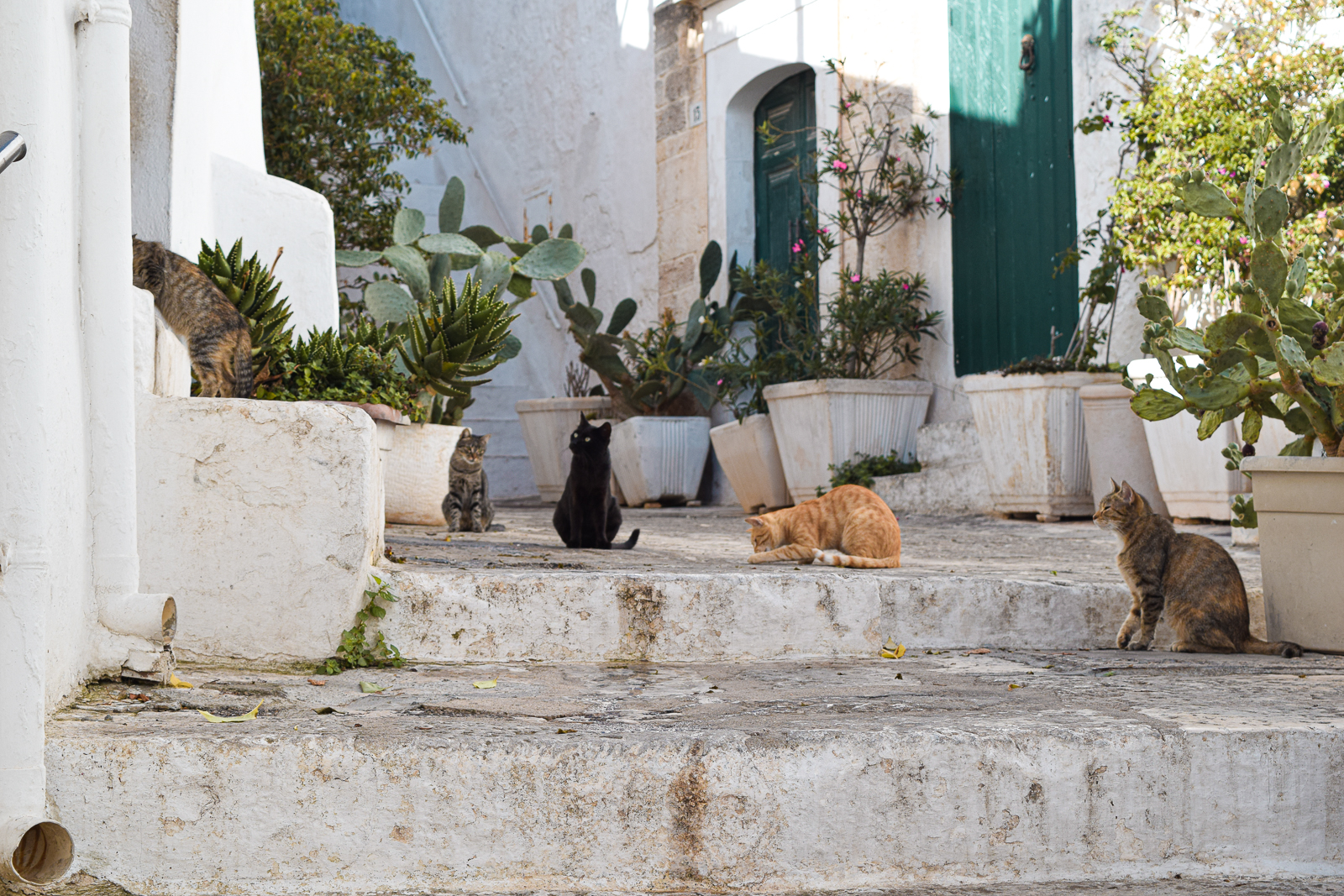
As you walk under the Arco di Scoppa you begin to see glimpses of Ostuni Cathedral’s majestic architecture come into view step by step. One of the most memorable moments when visiting Ostuni is Ostuni Cathedral. It’s called many different names: Ostuni Cathedral, the Duomo di Ostuni and Basilica concattedrale di Santa Maria Assunta. But they’re all one and the same. Built in 1435 in late Gothic and later in Baroque Style, the exterior has an elegant façade with an elaborate rose window. I stepped in to admire the work inside the medieval cathedral. When I came back out it was like I had gone from dark cool to white cool.
6. Continue Wandering Il Centro Storico
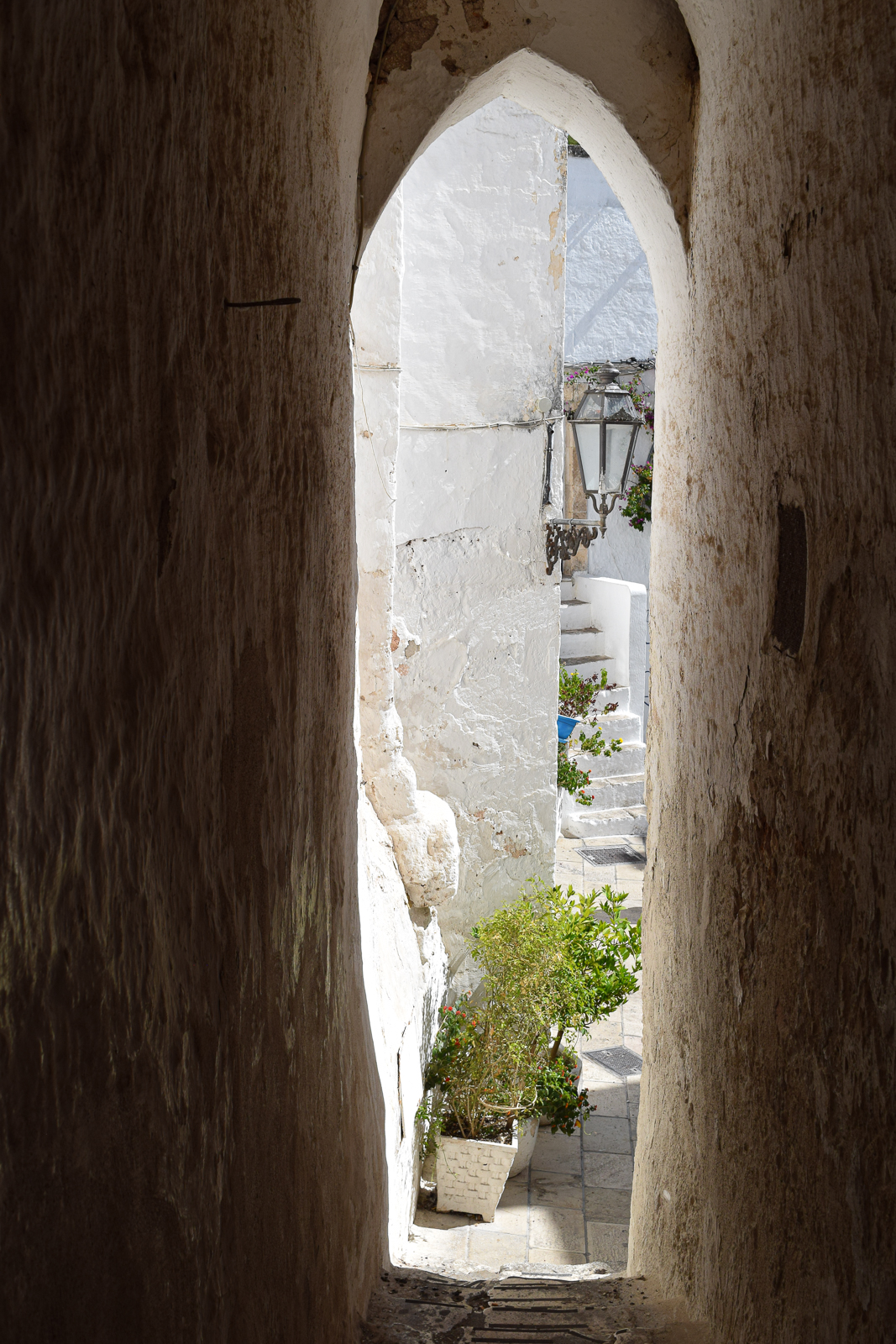
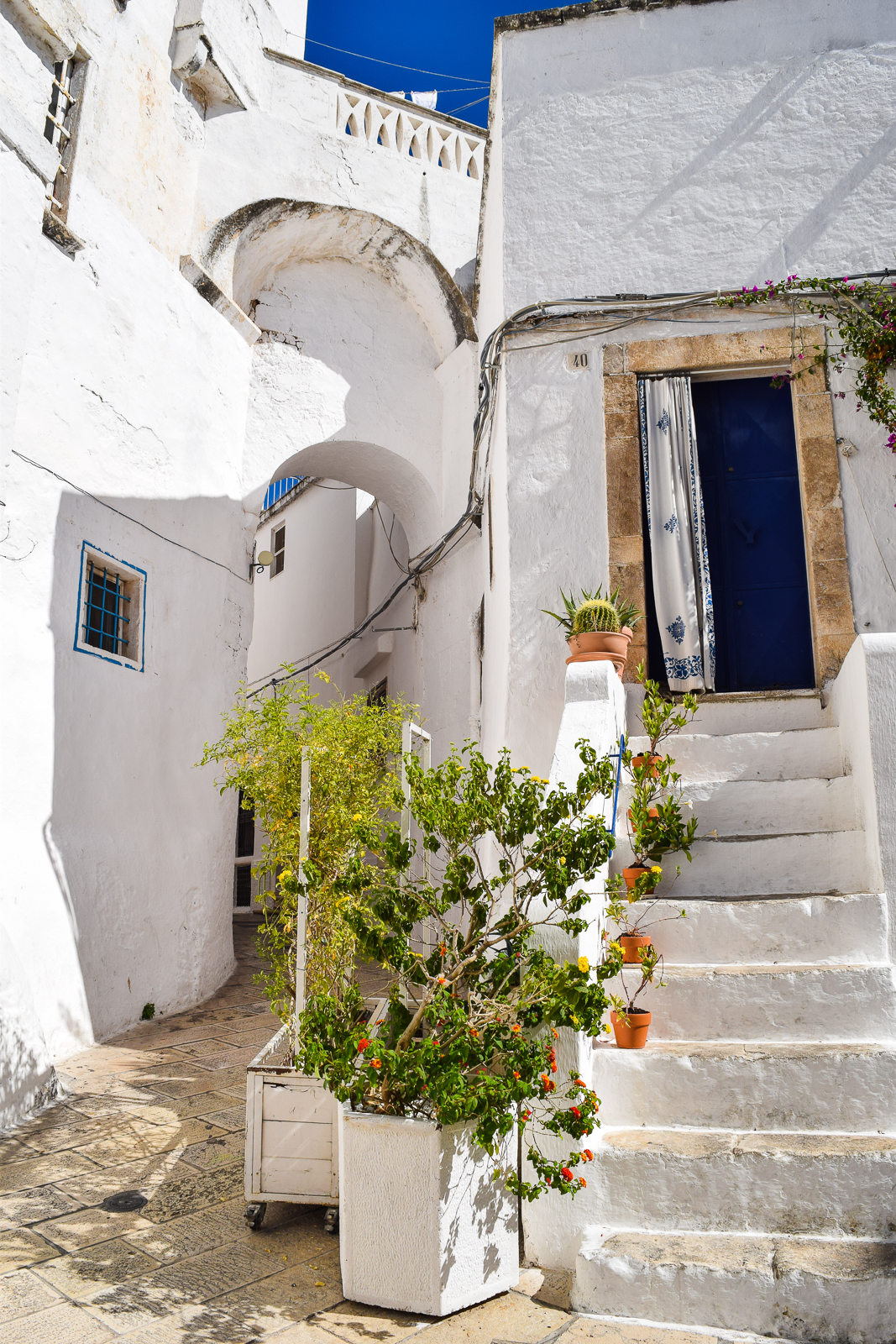
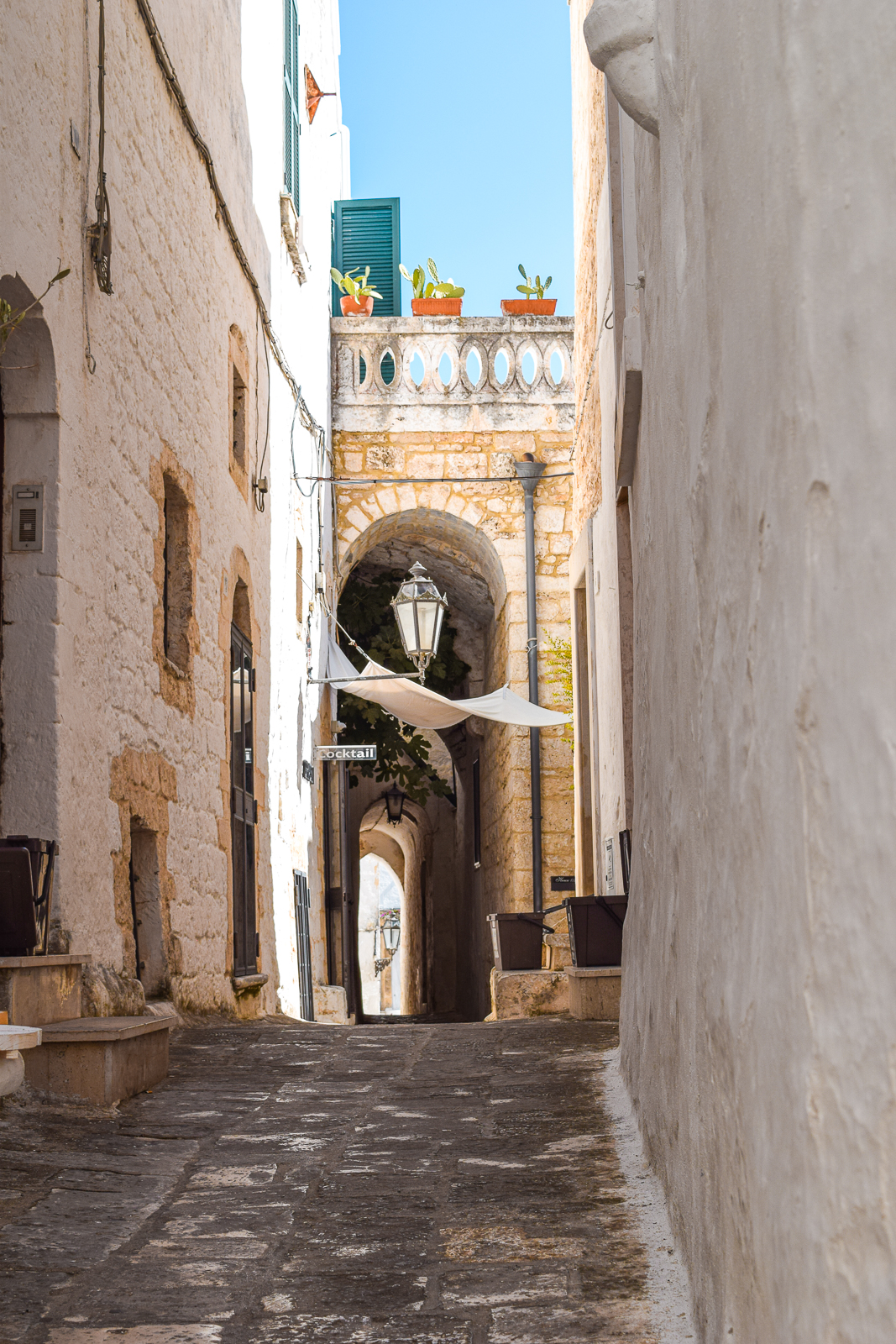
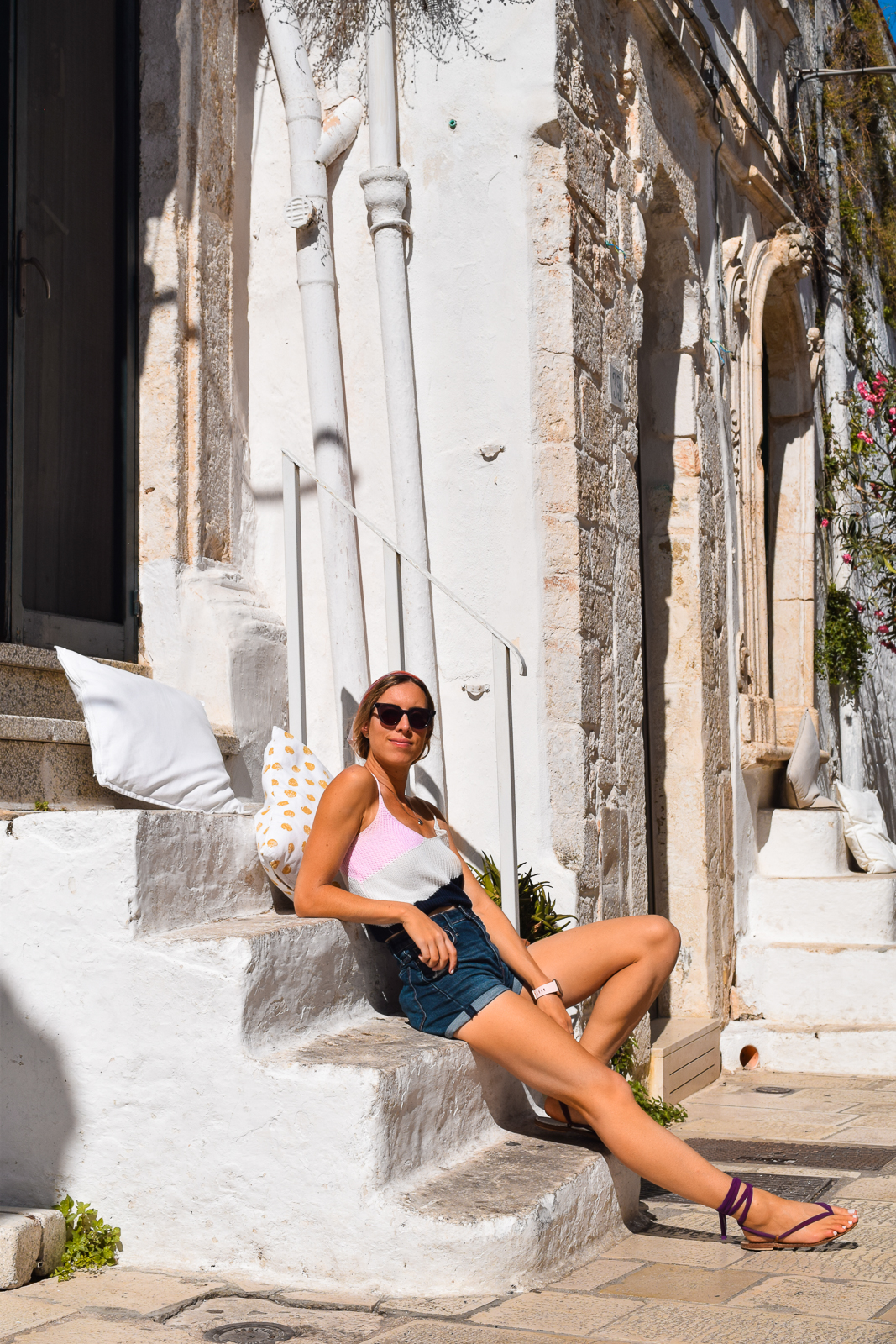
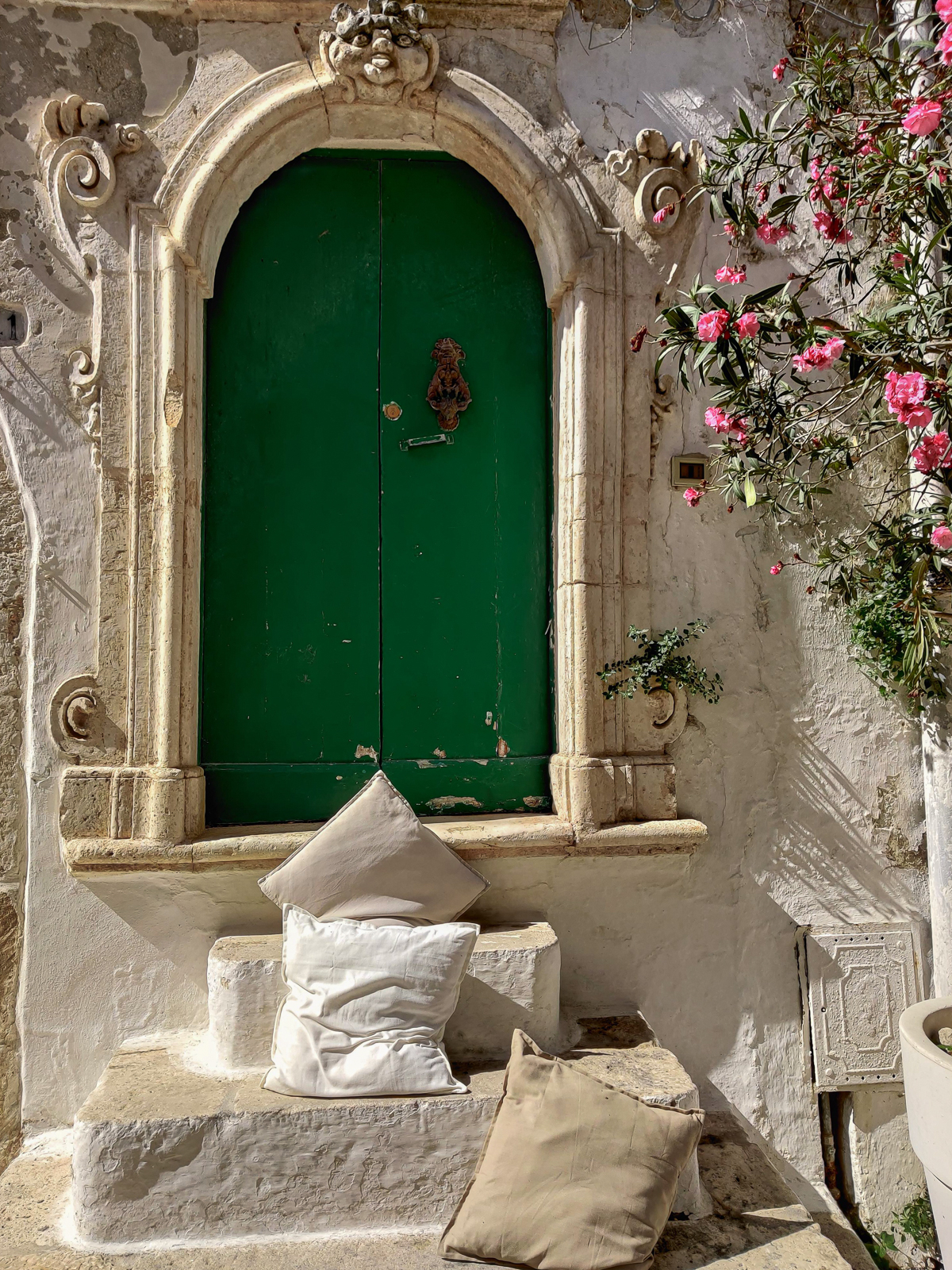
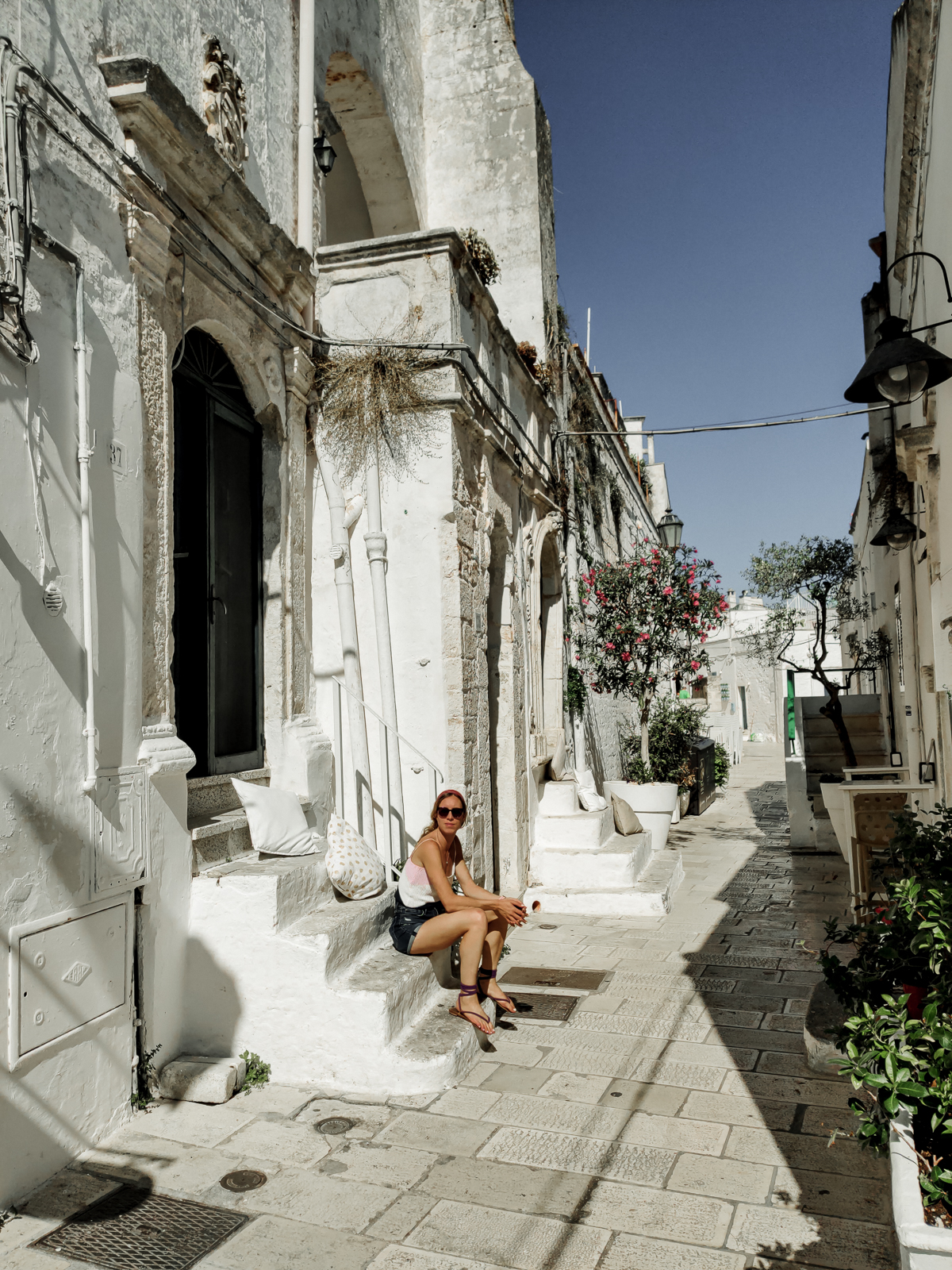
It’s hard to get tired of the village’s nuances when visiting Ostuni. Don’t resist the urge to wander off the main street and down a narrow alley off at a tangent. Give into those urges and they won’t disappoint. It’s always easy to find your way back to the main road eventually.
7. Visit the Outskirts Defensive Walls
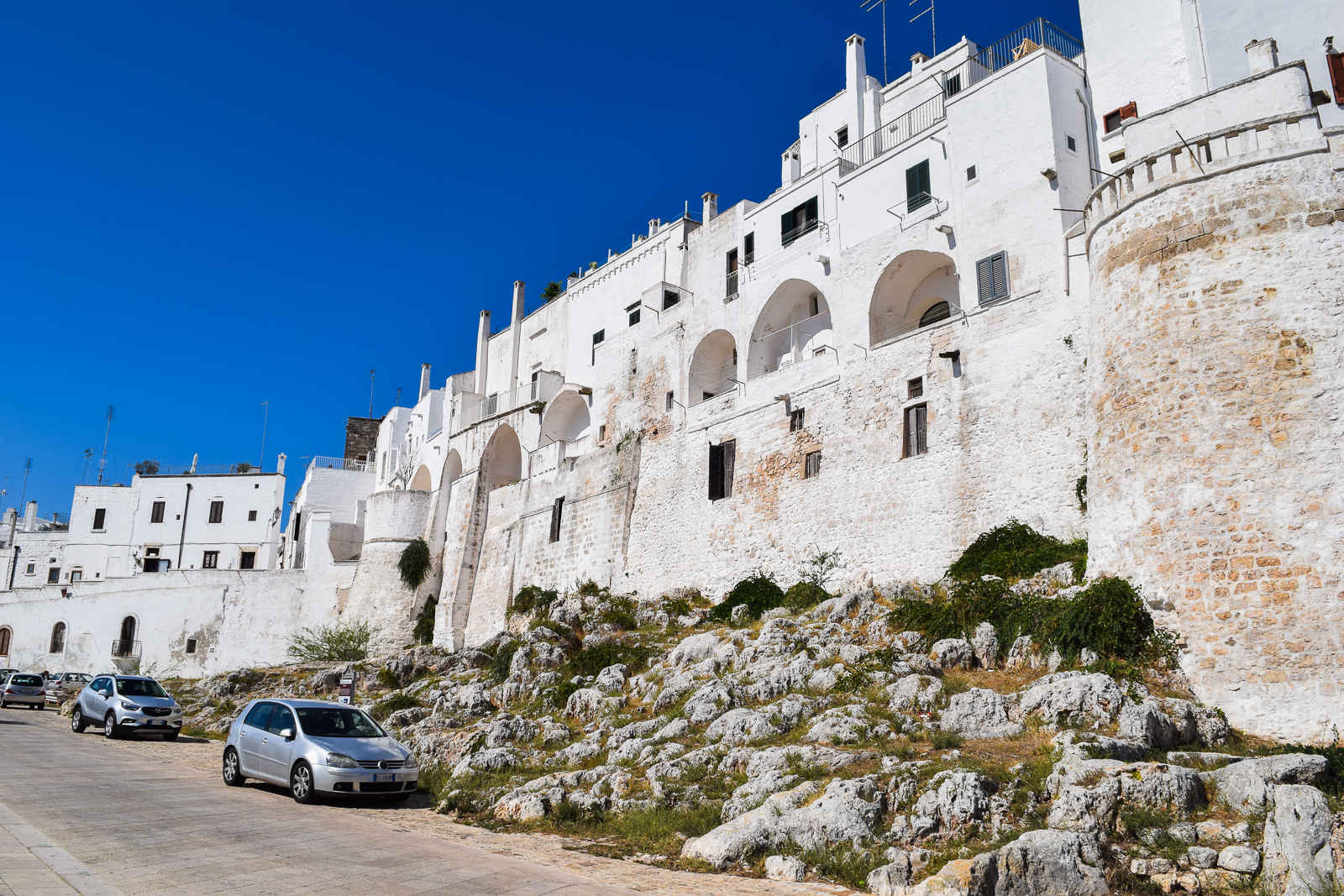
From the exterior there are no dark spots, even in open windows and doors, and the effect is fairly-like and unreal. Most of the roofs are flat, and the trees are generally olive, carob, and orange, with an occasional palm, making you feel like your in the magic of the East. To round-off, no pun intended, your Ostuni trip. Take a stroll on the outskirts and see the defensive walls that encircle the centro storico. They were constructed back in medieval days to keep invaders. Today they give stunning views to olive groves and the Adriatic sea on one side and farmland on the other.
>> Next: Trullo a ll’éra: Stay In A Trullo In Puglia, Italy
Follow SVADORE on:
